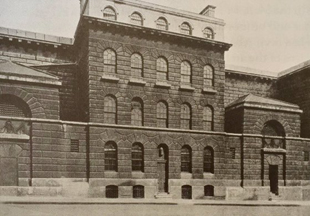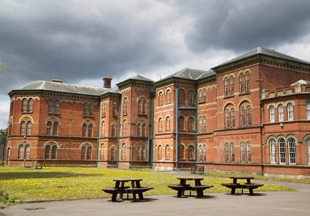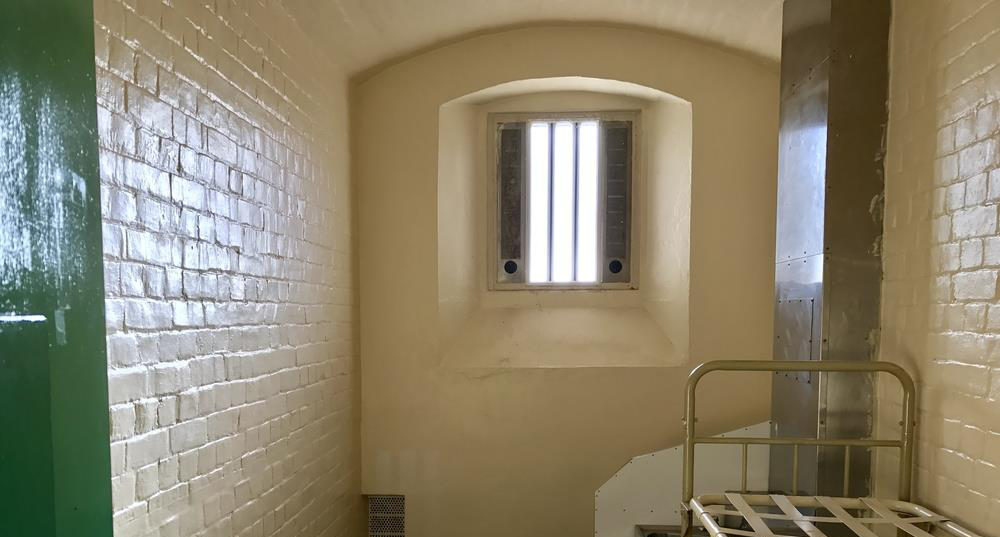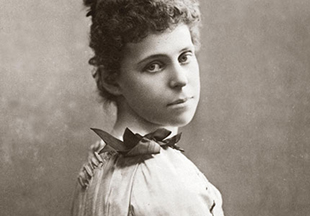Elizabeth Stride was born Elizabeth Gustafsdotter in Sweden. Elizabeth Stride was born on 27th November 1843 in Torslanda, near Goteborg, Sweden.
Elizabeth Stride, also known as Long Liz to her friends, was murdered by Jack the Ripper on 30th September 1888, aged 44. Elizabeth was Jack the Ripper's third victim.
Prior to her brutal murder Elizabeth had been living in Spitalfields. She was staying in a lodging house on Dorset Street. Elizabeth had an on-off relationship with Michael Kidney, a waterside labourer. Michael Kidney was also in the Army Reserve. Before her death Elizabeth left the lodging house with some of her belongings - just as she had many times before. Michael gave evidence at Elizabeth's inquest and stated Elizabeth had "wandered off" many times - always returning..
Elizabeth Stride was thought to be fond of telling small lies. She led people to believe she had arrived in London as a young girl. However, the earliest records for her are from 1879. Elizabeth is mentioned in the Swedish Church register after being given a shilling.
Records show Elizabeth left Sweden to take a “situation” with a gentleman who lived near Hyde Park. It is thought that once this "situation" had ended she started a relationship with a policeman.
Elizabeth married John Thomas Stride, a carpenter by trade, in 1869. According to Elizabeth John Thomas died when the Princess Alice sank after colliding with a steam collier. Over 600 people died when the Princess Alice went down. Elizabeth told varying tales of the disaster - some saying two of her children died and some saying all of her nine children died. It was this disaster that she also blames for the loss of her two front teeth.
However, records at the Poplar and Stepney Sick Asylum show that John Thomas Stride died there on October 24th, 1884. He certainly doesn't appear to have drowned in a shipwreck. It doesn't appear to be clear if they actually had any children. Once the Swedish church found out that John hadn't died in the shipwreck they stopped all financial assistance to Elizabeth Stride. It is thought there was a special fund set aside for survivors of the shipwreck.
After leaving Dorset Street Elizabeth lodged at 32 Flower and Dean Street. The deputy of this location was Elizabeth Tanner, a widow. Elizabeth Tanner confirmed at the inquest that Elizabeth Stride had resided with Mr Kidney. On Thursday 27th September, after leaving her previous lodgings, Elizabeth stayed with Elizabeth Tanner. She also stayed on the Friday night.
Early on the Saturday Elizabeth Stride earned herself sixpence after cleaning two lodging-house rooms at the Queen's Head Public House on Commercial Road.
Later that day Elizabeth Stride spent some time with her friend Catherine Lane. Elizabeth asked her friend to look after some velvet for her. Prior to leaving the lodging house, possibly to spend her sixpence, Charles Preston, a barber, had lent Elizabeth the use of a clothes brush. She is reported to have been dressed in a suitable fashion for the miserable weather.
She was wearing:
Two petticoats made of a cheap material resembling sacking
A white chemise
White cotton stockings
A black velveteen bodice
A black skirt
A black jacket trimmed with fur
A colourful striped silk handkerchief around her neck
A small black crepe bonnet
In her pockets were two handkerchiefs, a skein of black worsted darning yarn, and a brass thimble.
Berner Street was a small thoroughfare where people worked from home. Traders consisted of tailors, shoemakers and cigarette makers. There were many Poles and Germans living in Berner Street.
Elizabeth was seen close to where William Marshall (a labourer) lived at at approximately 11.45PM. William Marshall saw Elizabeth Stride talking to and kissing a man he described as: wearing a short black coat, dark trousers and what could resemble a sailor's cap. The man teased Elizabeth by saying "You would say anything but your prayers". Neither the man kissing Elizabeth or Elizabeth appeared intoxicated and were seen heading towards the International Working Men’s Educational Club on Berner Street.
Later that evening Elizabeth was seen by another local man, James Brown. He saw Elizabeth leaning against a wall talking to a man of average height, dressed in a long overcoat. James Brown said they were at the corner of Fairclough Stret and Berner street.
At 12:35, Police Constable William Smith, 452 H Division, was the last person to see Elizabeth Stride alive. Elizabeth was wearing a flower on her coat and was in the presence of a man PC Smith described as carrying newspaper-wrapped package that was eighteen inches long and six to eight inches wide. The man was of average height and was dressed in a hard felt deerstalker, a dark overcoat and dark trousers.
At 1.00AM Louis Diemschutz returned to the IWMC building at 40 Berner Street, where he resided, with his costermonger's barrow. Louis Diemschutz was the manager of the club. The gates were usually closed at around 9PM - but were open on Louis Diemschutz's return. On entering his pony suddenly shied to the left. Louis fetched a candle from inside so that he could see the woman's body clearly.
Elizabeth Stride's throat had been slashed. The top buttons of her jacket were undone. When PC William Smith returned to Berner Street he was faced with a crowd shouting "Police" and "Murder".
PC Smith reported that the last round of his beat had taken no more than twenty-five minutes. The killer could only have struck in the brief time the last circuit took.
Police Surgeon Dr. George Phillips was called to the scene. He quickly ruled out suicide and reported the throat had been slashed from the front. Experts believe that the slashed throat was actually made from behind and not the front.
Some experts also believe Walter Sickert could possibly have visited the IMWC club before Elizabeth's murder. On the evening before Elizabeth was found the club had held a debate in German on "why Jews should be socialists". Walter Sickert was allegedly fluent in German and many feel he would have been present for the debate.
The flower on Elizabeth's coat was a red rose. It never became clear where the rose had come from.
Elizabeth Stride | Jack The Ripper | Victim
29/01/2017





Comments